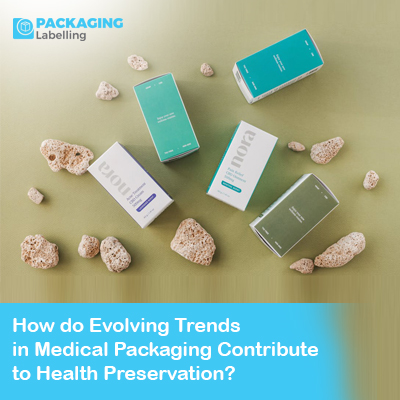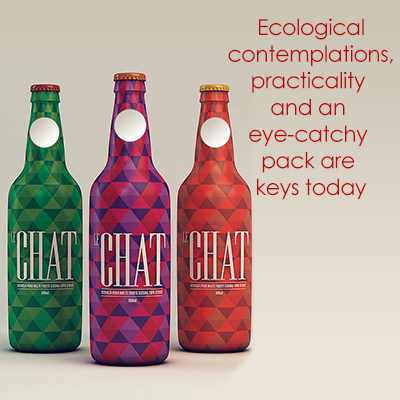How do Evolving Trends in Medical Packaging Contribute to Health Preservation?

In the realm of healthcare, where patient safety and treatment efficacy are paramount, the role of medical packaging cannot be overstated. Evolving trends in this field have led to remarkable advancements that contribute significantly to health preservation. From improved barrier properties to smart packaging solutions and sustainability initiatives, the landscape of medical packaging is undergoing a transformative phase. In this comprehensive 2000-word article, we will explore how these evolving trends are shaping the future of medical packaging and their profound impact on health preservation.
1. Introduction
Medical packaging serves as the first line of defense in preserving the integrity and effectiveness of pharmaceuticals, biologics, medical devices, and diagnostic products. Over time, the healthcare industry has witnessed a shift towards innovative packaging solutions that go beyond mere containment. These solutions are designed to mitigate risks, enhance patient safety, improve regulatory compliance, and contribute to environmental sustainability.
2. The Evolution of Medical Packaging
Historically, medical packaging primarily focused on physical protection and sterility. However, as technology advanced and regulatory requirements became more stringent, the landscape evolved. The development of specialized materials with superior barrier properties revolutionized packaging design, enabling longer shelf life and increased product stability. Concurrently, the rise of personalized medicine and complex drug formulations necessitated customized packaging solutions to ensure accurate dosing and patient adherence.
3. Key Trends in Medical Packaging
3.1 Improved Barrier Properties
One of the fundamental aspects of modern medical packaging is its ability to provide a robust barrier against external elements. This includes protection against moisture, oxygen, light, and microbial contamination. Advanced materials such as high-density polyethylene (HDPE), polyethylene terephthalate (PET), and aluminum foil laminates offer superior barrier properties, preserving the quality and efficacy of sensitive pharmaceuticals and biologics.
3.2 Smart Packaging Solutions
The integration of smart technologies into medical packaging has revolutionized supply chain management and patient safety. Radio-frequency identification (RFID) tags, temperature sensors, and tamper-evident seals enable real-time monitoring of products from manufacturing facilities to end-users. This ensures optimal storage conditions, prevents counterfeit products, and enhances traceability throughout the distribution network.
3.3 Sustainability Initiatives
In response to growing environmental concerns, the healthcare industry is embracing sustainable packaging solutions. Biodegradable polymers, recyclable materials, and minimalist packaging designs are reducing carbon footprints and minimizing waste generation. Manufacturers are also adopting eco-friendly practices such as energy-efficient production processes and responsible sourcing of raw materials, aligning with global sustainability goals.
3.4 Child-Resistant and Senior-Friendly Designs
Safety remains a top priority in medical packaging, especially concerning pediatric and geriatric populations. Child-resistant closures and packaging designs, as mandated by regulatory agencies, prevent accidental ingestion of medications by young children. Similarly, senior-friendly packaging features ergonomic designs and easy-to-read labeling, promoting medication adherence and reducing the risk of medication errors among elderly patients.
3.5 Anti-Counterfeiting Measures
Counterfeit pharmaceuticals pose a significant threat to public health and patient safety. To combat this menace, innovative anti-counterfeiting measures have been incorporated into medical packaging. Holographic labels, serial numbers, QR codes, and RFID-based authentication systems enable rapid verification of product authenticity, empowering patients and healthcare professionals to identify genuine medications.
3.6 Customized Packaging for Specialized Medications
The era of personalized medicine has necessitated tailored packaging solutions for specialized medications and biologics. Unit-of-use packaging, blister packs with pre-dosed formulations, and auto-injectors ensure precise dosing and ease of administration. These customized packaging formats not only improve patient convenience but also enhance medication adherence and therapeutic outcomes.
3.7 Integration of Patient Information
Medical packaging serves as a vital communication tool for patients, providing essential information about dosage instructions, potential side effects, and safety precautions. Patient-friendly labeling, multilingual instructions, and pictorial guides enhance medication understanding and promote adherence to prescribed treatment regimens. Additionally, packaging may include QR codes or web links for access to educational resources and support services.
3.8 Regulatory Compliance
Compliance with stringent regulatory standards is non-negotiable in the healthcare sector. Medical packaging must adhere to guidelines such as ISO 11607 for sterile barrier systems, Good Manufacturing Practice (GMP) regulations, and product-specific requirements set by regulatory authorities. Rigorous testing, validation processes, and documentation ensure that packaging meets the highest standards of safety, quality, and efficacy.
4. Challenges and Future Directions
Despite significant advancements, medical packaging faces ongoing challenges and opportunities for improvement. These include:
- Balancing security with accessibility: Designing packaging that is both secure against tampering and easy for patients to open and use.
- Addressing evolving regulatory requirements: Keeping pace with regulatory changes and ensuring compliance across global markets.
- Enhancing sustainability practices: Exploring innovative materials and packaging designs to reduce environmental impact without compromising product safety.
- Leveraging emerging technologies: Integrating artificial intelligence (AI), blockchain, and data analytics into packaging systems for enhanced traceability and quality control.
Looking ahead, the future of medical packaging lies in continuous innovation, collaboration across stakeholders, and a holistic approach to product safety and patient well-being.
Conclusion
In conclusion, evolving trends in medical packaging are instrumental in enhancing health preservation across the healthcare ecosystem. From improved barrier properties and smart packaging solutions to sustainability initiatives and patient-centric designs, these trends reflect a commitment to quality, safety, and innovation. As the healthcare landscape evolves, so too will the role of medical packaging in safeguarding patient health, ensuring medication adherence, and supporting sustainable healthcare practices. By embracing new technologies, best practices, and regulatory standards, stakeholders can collectively advance the field of medical packaging and contribute to better health outcomes for all.









